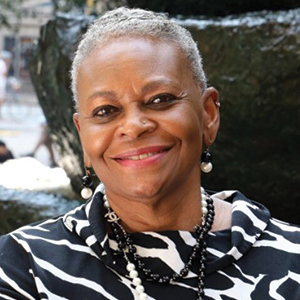Embracing a diverse, equitable and inclusive workforce is critical for businesses that want to take full advantage of multiple viewpoints and better reflect the communities they serve.
“The most important words are courageous, intentional, honest, humble and transparent,” says Margaret Larkins-Pettigrew, MD, MEd, MPPM, FACOG, SVP and chief diversity, equity and inclusion officer for Highmark Blue Cross Blue Shield. “If you lead by implementing these characteristics, you will absolutely move the needle.”
Smart Business spoke with Larkins-Pettigrew about how recruiting and retaining a diverse workforce will help your business move forward — and how it all starts with an inward look at your organization.
How can organizations start to make DEI part of their strategic priorities?
It starts with every one of us, especially leaders, embracing how you got where you are, because you can’t move forward until you understand that. Organizations need to be able to talk about structural racism, without blame or shame, and move into a space together where everyone understands that you don’t want to repeat past mistakes, you are committed to taking care of everyone and there is no place for hate. Be open-minded and courageous. Talk about the issues honestly and transparently, to think about how you can do things better.
Listen and talk about how you define yourself as an organization. When you have colleagues from different learned experiences, talking can be uncomfortable, but it is critical. Making DEI a strategic priority makes a significant statement about who you are as an organization and how much better you plan to be.
How does having a DEI strategy help move businesses move forward?
Businesses that fail to embrace DEI are losing out on great talent. Meet people where they are. A diverse workforce brings increased productivity, higher retention rates and more satisfied workers. As a result, employees know they can show up as their authentic selves and talk openly with their peers about who they are and begin giving their best as experts in their field.
Think about best practices. Who is doing this right, and who is doing it wrong? For example, many businesses don’t allow employees to show tattoos, but why are you forcing them to come in with their arms covered? If you want their expertise, it’s a very simple policy to change.
There are not enough people of color and people with disabilities represented in the workplace and provided with opportunities to be change agents. It’s the leaders’ responsibility to broaden their employee base and recognize the talent in their own backyard, no matter what that looks like.
You can also grow your own talent. Build pipeline programs to attract bright, young minds, and recruit them to come into your space. If you don’t cultivate people, if you don’t treat them as experts and make them feel like they belong, you are overlooking a huge portion of your potential talent pool.
What do you see for the future?
People of color, those with high and low economic statuses, have often been treated poorly, and we need to change that dynamic and look at the entire picture as a society. The missteps of the past have allowed discrimination, and it must be checked. What are you doing in your own space, and how can you clean up your house?
People are at a tipping point. They are talking about what is preventing their business from being the best it can be. DEI is not a one-off but a lifelong journey. Make an intentional commitment, invest and talk about how our differences can make us all better. Then celebrate that togetherness and the sense of belonging it creates.
We have to be optimistic, but it takes time for people to change. Given that time, I believe many institutions make significant changes to be better. Leadership is where all the levers are pulled, so leadership must see their progress through a social justice lens with honesty and transparency. If you can’t fix it in your own organization and turn those stones over, you can’t move forward. Embracing diversity, equity and inclusion can take your business to the next level, sparking inspiring results — but you have to be open to doing the work. ●
INSIGHTS Health Care is brought to you by Highmark Blue Cross Blue Shield.


